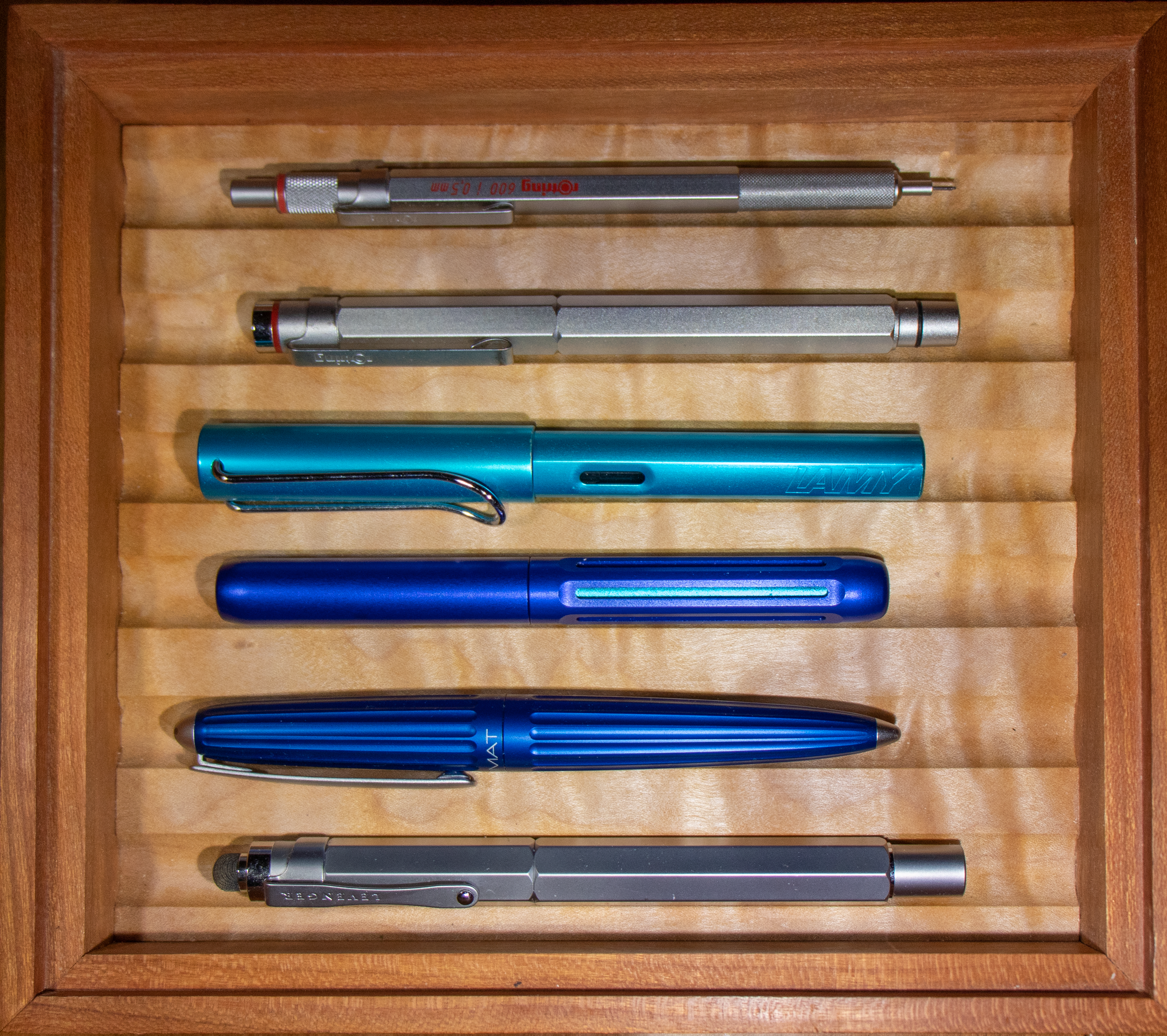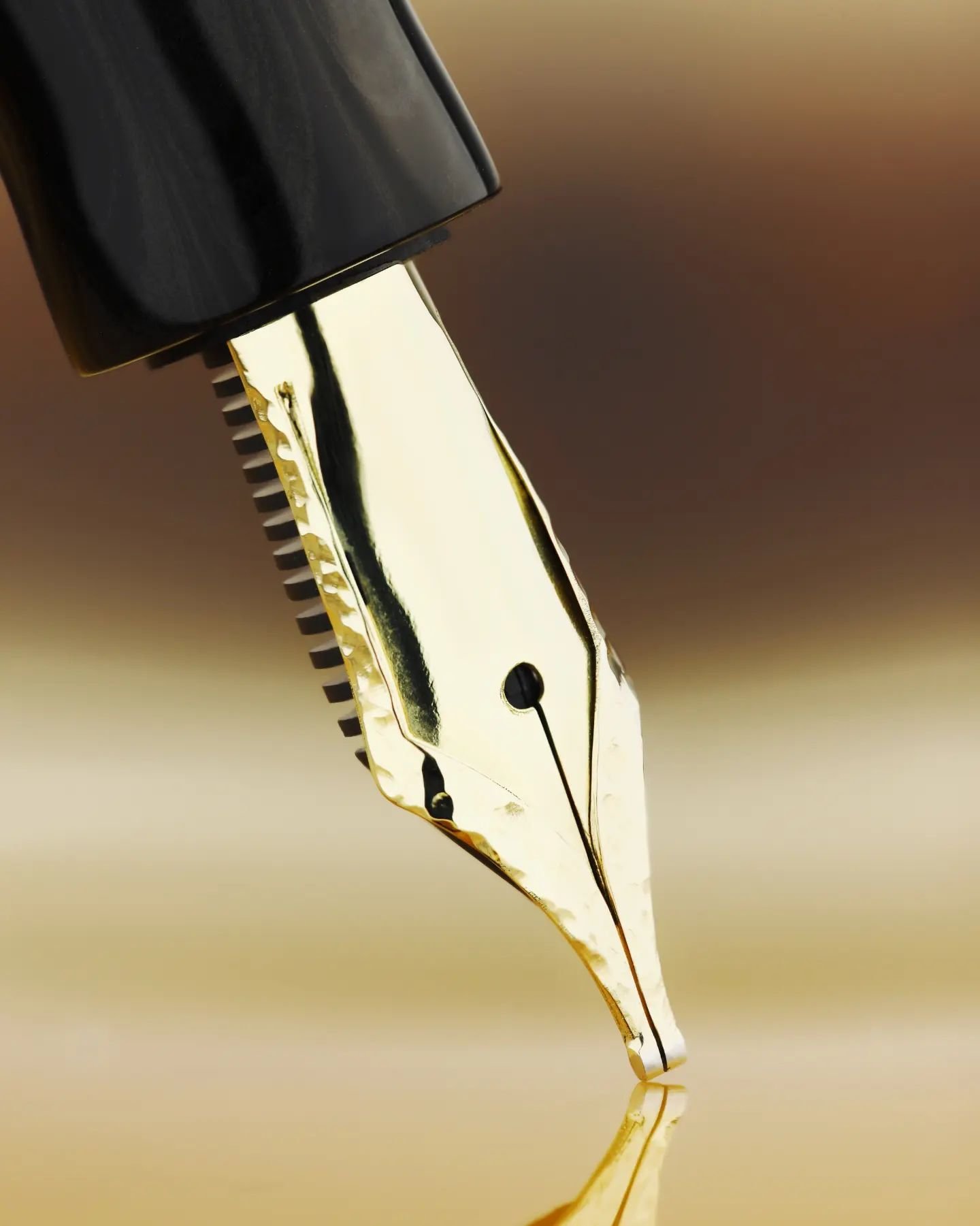(This is a guest Post from Sam Alpert. Sam is a geologist, gamer, and general lover of all things with good, clean design that will last a lifetime.)
I was fortunate enough to be able to attend my first pen show ever this year at the Baltimore Washington International Pen Show, or BWIPS for short! One of my biggest objectives was to take advantage of the presence of nib grinders to get at least one of my pens ground. This wouldn’t be my first time having this done, previously I was able to get an architect grind from JJ Lax when he was doing an in-store event for Fountain Pen Day 2023. I loved the experience, and was keen to continue finding ways to customize my writing.
I was only going to be able to attend the show on Friday, so I looked online and was able to book in advance with JC at The Nib Tailor. But Sam, you say quickly, this article refers to All in the Nib, surely that was a typo. Unfortunately, Thursday night, disaster struck, when JC fell ill and canceled all his Friday appointments. This was pretty rough, since I’d only booked to be at the event the one day. I immediately reached out for advice, and Brad was quick to recommend Damien. With no availability to book appointments online I made sure I was there early Friday to go straight to his table when the doors opened and take the first slot that I could find. With my name on for 3:30 I was happy to spend the rest of my morning accomplishing other goals (Schon DSGN presents clear and present danger to your wallet, just saying.)
Damien looking like a wizard while grinding my nib. When I asked if I could take a photo he said, “please do, I don’t have that many of myself working” which I thought was sarcastic at first, but turns out he really is just too focused to get photos!
When I sat down with Damien the first thing he did was to ask what kind of grinds I had, and what I did or didn’t like about them. I told him my preferences, M SIG for life, and he walked me through a couple of choices that he thought I might like. It was very helpful that he had a tester pen on his table for each grind he offers, allowing me to effectively preview how they would actually feel in practice. This seems somewhat common for nib grinders and I would say it was essential as basically a first-timer. For example, I would normally never have asked for an oblique grind, but while talking about what I didn’t like about the tester he had, Damien explained that there were things he could change (namely the angle of the oblique) that would better suit my writing angle. With that in mind, we settled on the oblique italic. Honestly, a lot of his grinds appealed to me, but I wanted to try something out of my comfort zone, and so put myself in Damien’s extremely competent hands.
I’d brought a B 21k Sailor nib that just hadn’t been doing it for me. Damien encouraged me to talk him through what I did and didn’t like about the nib as-was, and used that as a starting point for the grind. The first thing he did was to open up the nib slightly, allowing for a wetter writing experience, he then set to work grinding the oblique italic, keeping just a hint of the feedback that Sailor is known for.
The finished grind is super smooth, and fits my writing style perfectly. I get good variation in my strokes, and don't feel any need to adjust how I hold the pen. Damien was patient with me testing the grind a few times, and making tweaks according to my feedback. All in all it was a fantastic experience and I'm very glad to have met him. He is professional, but also clever, making smalltalk all while focusing on making the grind. I would absolutely recommend Damien to anyone looking for a fantastic grind at a very fair rate. And for those of you worried about grinding your expensive nibs, I encourage you to stop by a table at a pen show and try the tester pens, you may be surprised what cool things you’ll find!
Enjoy reading The Pen Addict? Then consider becoming a member to receive additional weekly content, giveaways, and discounts in The Pen Addict shop. Plus, you support me and the site directly, for which I am very grateful.
Membership starts at just $5/month, with a discounted annual option available. To find out more about membership click here and join us!















